Caixia Fan
Transfer feature generating networks with semantic classes structure for zero-shot learning
Mar 06, 2019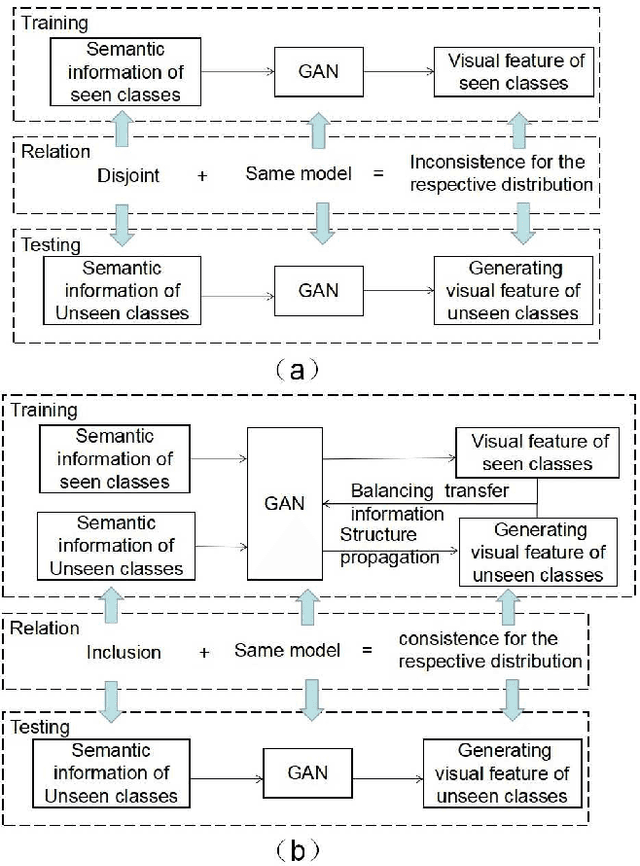
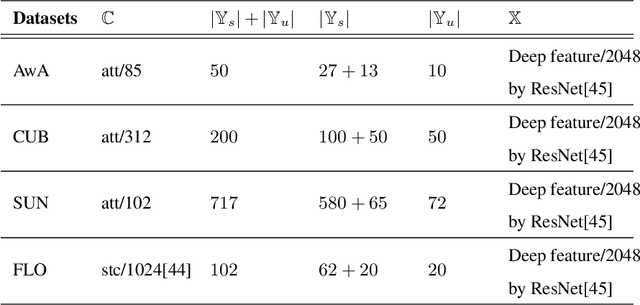
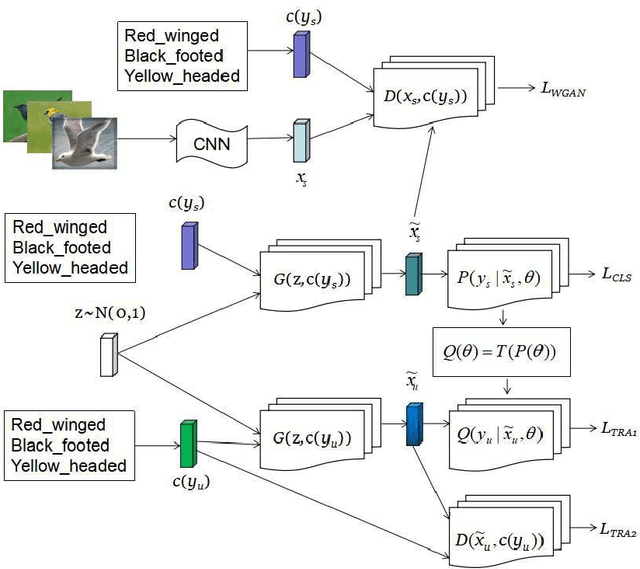
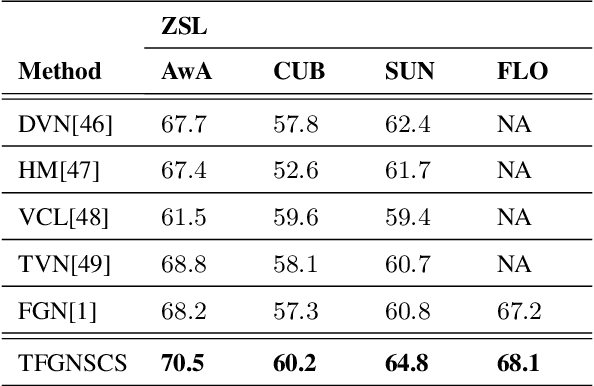
Abstract:Suffering from the generating feature inconsistence of seen classes training model for following the distribution of unseen classes , most of existing feature generating networks difficultly obtain satisfactory performance for the challenging generalization zero-shot learning (GZSL) by adversarial learning the distribution of semantic classes. To alleviate the negative influence of this inconsistence for zero-shot learning (ZSL), transfer feature generating networks with semantic classes structure (TFGNSCS) is proposed to construct networks model for improving the performance of ZSL and GZSL. TFGNSCS can not only consider the semantic structure relationship between seen and unseen classes but also learn the difference of generating features by balancing transfer information between seen and unseen classes in networks. The proposed method can integrate a Wasserstein generative adversarial network with classification loss and transfer loss to generate enough CNN feature, on which softmax classifiers are trained for ZSL and GZSL. Experiments demonstrate that the performance of TFGNSCS outperforms that of the state of the arts on four challenging datasets, which are CUB,FLO,SUN, AWA in GZSL.
Class label autoencoder for zero-shot learning
Jan 25, 2018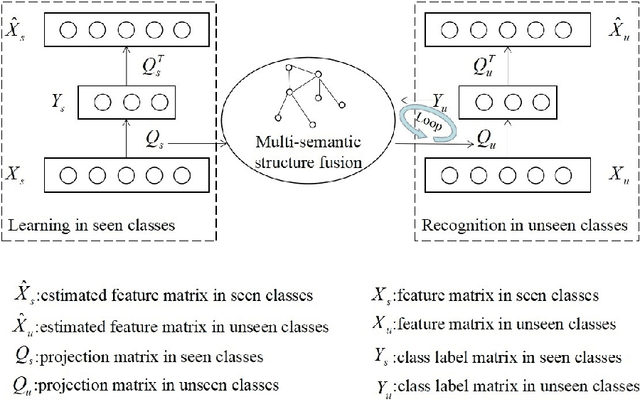
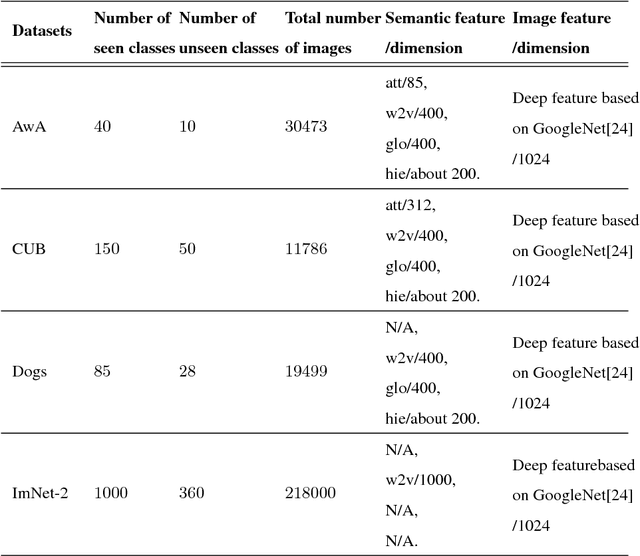
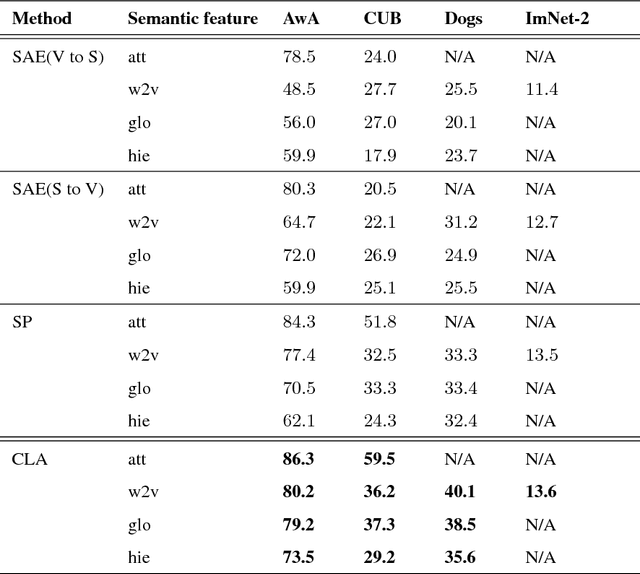
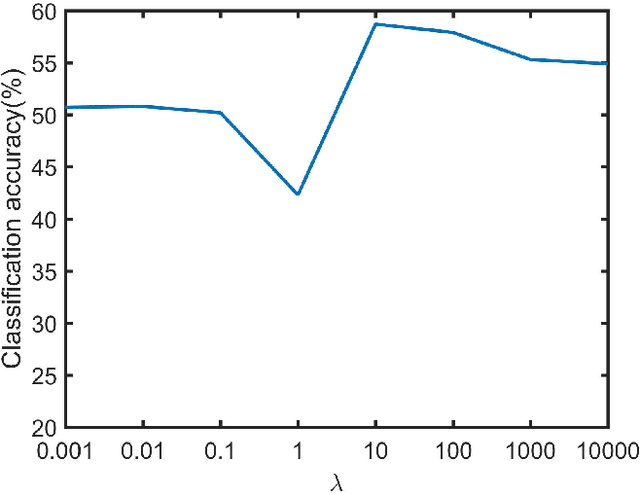
Abstract:Existing zero-shot learning (ZSL) methods usually learn a projection function between a feature space and a semantic embedding space(text or attribute space) in the training seen classes or testing unseen classes. However, the projection function cannot be used between the feature space and multi-semantic embedding spaces, which have the diversity characteristic for describing the different semantic information of the same class. To deal with this issue, we present a novel method to ZSL based on learning class label autoencoder (CLA). CLA can not only build a uniform framework for adapting to multi-semantic embedding spaces, but also construct the encoder-decoder mechanism for constraining the bidirectional projection between the feature space and the class label space. Moreover, CLA can jointly consider the relationship of feature classes and the relevance of the semantic classes for improving zero-shot classification. The CLA solution can provide both unseen class labels and the relation of the different classes representation(feature or semantic information) that can encode the intrinsic structure of classes. Extensive experiments demonstrate the CLA outperforms state-of-art methods on four benchmark datasets, which are AwA, CUB, Dogs and ImNet-2.
 Add to Chrome
Add to Chrome Add to Firefox
Add to Firefox Add to Edge
Add to Edge